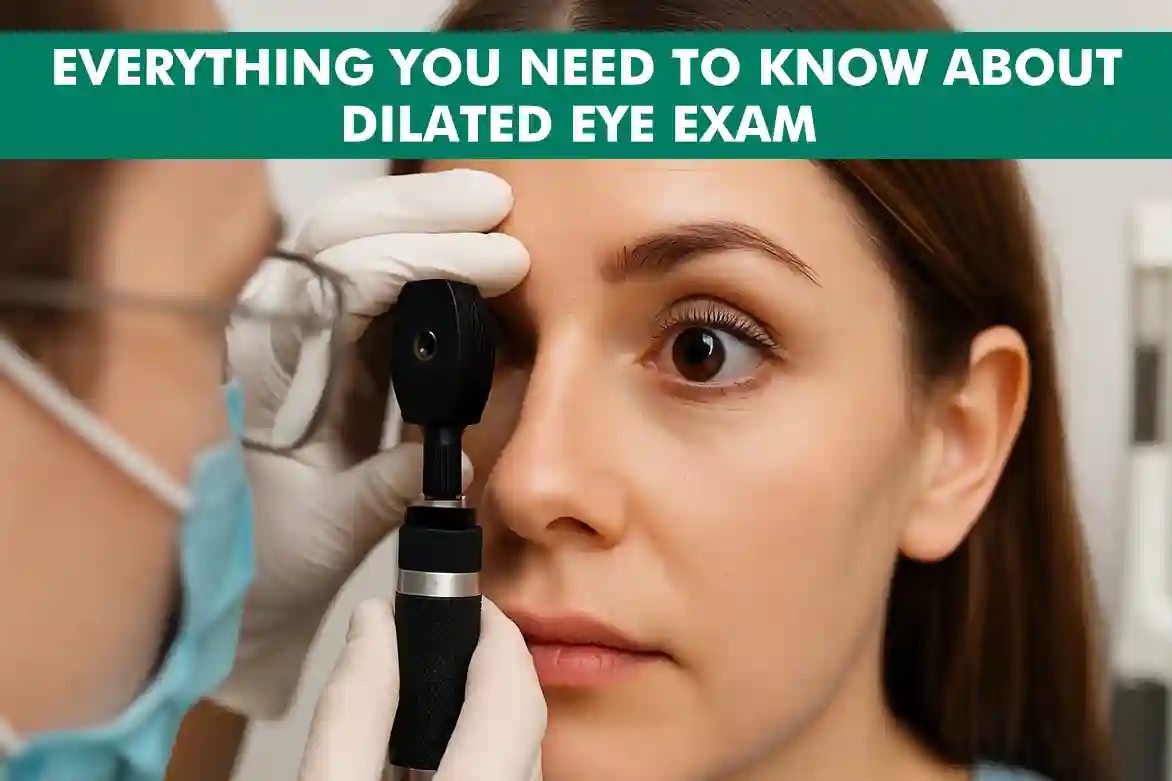A dilated eye exam is a comprehensive eye examination in which special eye drops are used to enlarge the pupil. This allows an eye doctor to thoroughly examine the retina, optic nerve, and other structures at the back of the eye. Unlike regular vision tests, a dilated eye exam procedure provides a deeper view of eye health, helping detect conditions such as glaucoma, diabetic retinopathy, and macular degeneration.
Many people wonder, what is a dilated eye exam, and why is it necessary? The answer lies in its ability to reveal early signs of eye diseases, some of which have no noticeable symptoms in the early stages. By undergoing this test, individuals can catch potential issues before they lead to significant vision loss.
What is a Dilated Eye Exam?
A dilated eye exam is a diagnostic test performed by optometrists or ophthalmologists to get a detailed look at the back of the eye. The key feature of this exam is the use of special dilating eye drops that temporarily enlarge the pupil, allowing more light to enter and giving doctors a clearer view of internal eye structures.
During the exam, the doctor checks for various issues, including:
- Retinal health – Detecting signs of retinal detachment, diabetic retinopathy, or macular degeneration.
- Optic nerve condition – Identifying early indicators of glaucoma or other nerve-related conditions.
- Blood vessel abnormalities – Assessing eye blood flow to detect diseases like hypertension or diabetes.
Dilated Eye Exam Procedure
The dilated eye exam procedure is simple and painless. Here’s what to expect:
- Application of Eye Drops: The doctor places special drops in each eye to dilate the pupils. It may take 15 to 30 minutes for full dilation to occur.
- Eye Examination: Using a bright light and magnification tools, the doctor inspects the retina, optic nerve, and blood vessels.
- Additional Tests: In some cases, imaging tests like optical coherence tomography (OCT) may be performed for a more detailed analysis.
- Recovery: The effects of dilation typically wear off within 4 to 6 hours, but this varies from person to person.
What Does a Dilated Eye Exam Show?
Many patients ask, what does a dilated eye exam show? This test provides valuable insights into:
- Diabetic Retinopathy: Early detection of retinal damage in diabetic patients.
- Glaucoma: Checking for increased pressure and optic nerve damage.
- Macular Degeneration: Identifying age-related changes in central vision.
- Cataracts: Detecting clouding of the lens.
- Hypertension or Stroke Risk: Blood vessel abnormalities in the eye may indicate systemic health issues.
Side Effects of a Dilated Eye Exam
While the exam itself is painless, some temporary dilated eye exam side effects include:
- Blurry near vision
- Increased sensitivity to light
- Difficulty focusing
- Mild eye discomfort
These effects usually fade within a few hours. Wearing sunglasses and avoiding screens can help ease discomfort.
How Often Should You Get a Dilated Eye Exam?
How often should you get a dilated eye exam? It depends on individual risk factors:
- Ages 20-39: Every 2-4 years (if no eye issues)
- Ages 40-64: Every 2 years (or more frequently if at risk for eye diseases)
- Ages 65+ or Diabetics: Annually, to monitor for glaucoma, diabetic retinopathy, and macular degeneration.
Individuals with a family history of eye disease or conditions like high blood pressure should undergo the test more frequently.
Can You Drive After a Dilated Eye Exam?
One common concern is, can you drive after a dilated eye exam? The answer depends on how much dilation affects your vision. Since pupils stay enlarged for several hours, some individuals experience significant light sensitivity and blurred vision. It’s generally recommended to have someone drive you home or wait until vision clarity returns before attempting to drive.
What Not to Do After a Dilated Eye Exam
Following the exam, it’s important to know what not to do after a dilated eye exam to avoid discomfort or accidents:
- Avoid driving if your vision is significantly blurry.
- Limit screen time to reduce eye strain.
- Wear sunglasses to protect against bright light.
- Refrain from reading fine print until your near vision returns to normal.
- Do not rub your eyes, as this may cause irritation.
How Long Does It Take for Eyes to “Un-dilate” Or Return to It’s Original State?
Another frequent question is, how long does it take for eyes to “un-dilate”, i.e., constrict back to their original state? On average, the effects last between 4 to 6 hours, but this can vary based on factors such as age, eye colour, and the type of dilating drops used. Some people, especially those with lighter eye colours, may experience prolonged dilation.
FAQs
The full exam, including dilation and assessment, usually takes 30 to 60 minutes. However, the effects of dilation can last for several hours.
No, the exam is painless. You may feel mild discomfort when the drops are applied, but the test itself does not cause pain.
Yes, in some cases. Swelling of the optic nerve, which may be seen during the exam, can indicate increased pressure in the brain, possibly linked to a tumor.
Yes, it is recommended. Even if you wear contacts, regular dilation helps monitor eye health beyond standard vision checks.
Yes, some clinics offer optomap retinal imaging, a non-dilated alternative. However, dilation remains the most thorough method.

